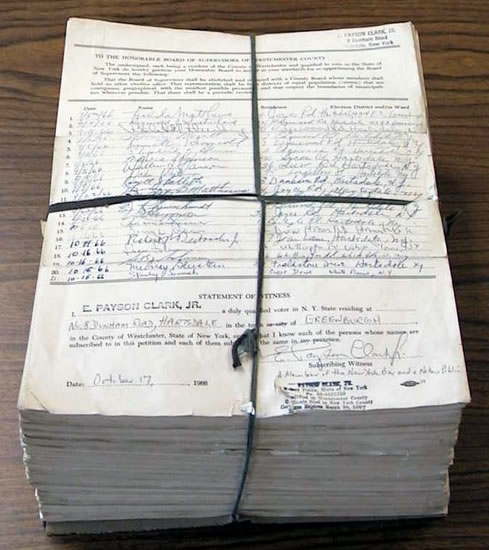 |
|||||||||||
| Reapportionment
Debate Records, 1965-1969 |
| The 200-year existence of the Board of Supervisors produced many and varied records related to the work of the premier legislative body for Westchester County. During this period, the county was run by supervisors who were chosen to represent its cities and towns and who placed heavy emphasis on home rule. One of the most intriguing struggles, the final one in fact, was how these supervisors would develop a workable reapportionment plan, pursuant to the 1965 landmark U.S. Supreme Court decision known as the “one man, one vote” ruling. Various documents indicate the fierceness of the Board’s resistance to change. Perhaps none illustrates this better than the December 1966 Statement by the Chairman and the Majority Leader of the Board, which called for passage of a local law over the veto of the County Executive. Weighted voting charts and census counts were developed as the debate intensified. A stack of voters’ petitions led to the subsequent lawsuit brought by the Town of Greenburgh and the League of Women Voters. Ultimately, a NYS Supreme Court judge imposed a plan on the reluctant supervisors, one that closely paralled a proposal from then County Executive Edwin Michaelian. This settled an important civil rights issue for Westchester. In 1970 – five years after the Supreme Court’s decision – the new Westchester County Board of Legislators took their seats, giving minority groups in large population centers an opportunity for representation that had been denied them in the past. |




